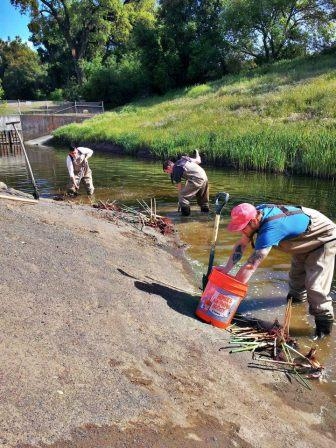College students create wildlife habitats in a Wild Campus program
Put together a group of hard-working, do-good college students who care about environmental issues, and you end up with a really “Wild Campus.” At UC Davis, students formed the student-run Wild Campus organization two years ago to conserve wildlife in the greater UC Davis area.
Working with campus experts (such as faculty and staff in the Department of Wildlife, Fish and Conservation Biology) and local environmental and conservation organizations, the volunteer students are improving the habitats for local wildlife and engaging the public in hands-on activities.
This is an extraordinary program that gives the students real-world environmental management skills, along with leadership opportunities and communications experience. Professor John Eadie, Department of Wildlife, Fish and Conservation Biology at UC Davis, said of the Wild Campus program, “Hands-on activity is a huge part of the educational experience.”
In the UC Davis Putah Creek Riparian Reserve, the students are establishing wildlife habitat areas and monitoring populations of amphibians, birds, fish, insects, mammals, and reptiles. They will record the changes over the course of time. Recent work in the riparian reserve (aka “the living classroom”) has included planting native oak seedlings, and installing tule plants to provide protection for the Western Pond Turtle, a species of concern.
A past project — Build a Wild Home Day — involved working with the UC Davis Arboretum on a successful public outreach program to build bird and bat boxes for installation on campus. (Great photos of this program are on the group’s Facebook page.)
The Wild Campus organization has a large cadre of eager and dedicated students who are improvising and making the most of limited resources. However, they are in need of donated field equipment (used equipment is fine) and financial contributions.
Visit the Wild Campus website and Facebook page for a feel-good look at what these ambitious students are doing to improve the environment, along with ways you can help them succeed.




